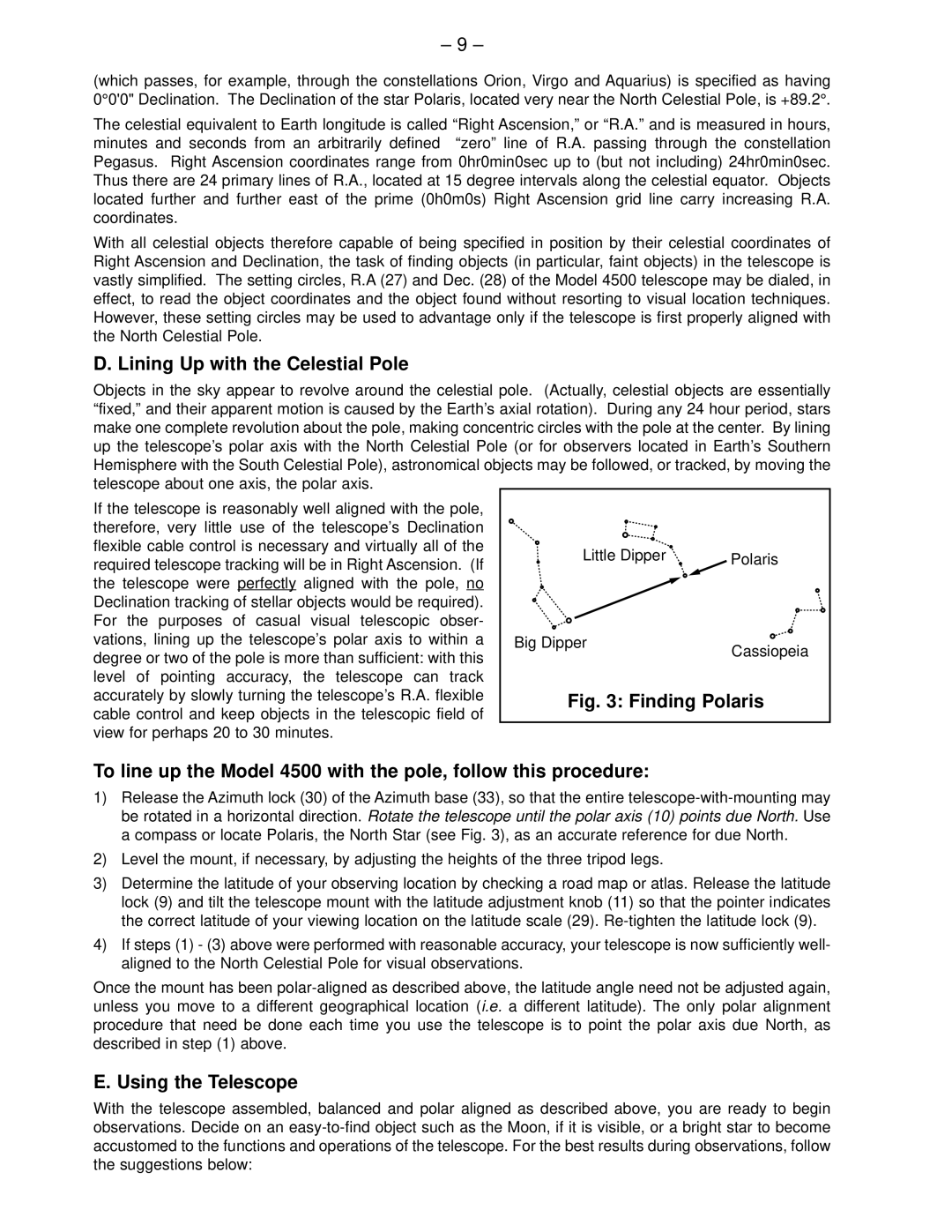4500 specifications
The Meade 4500 is a notable telescope in the world of amateur astronomy, designed to make stargazing accessible and rewarding for both novice and experienced observers. This telescope belongs to the category of Newtonian reflectors, known for their simple design, impressive optics, and affordability. At its core, the Meade 4500 features a 4.5-inch (114 mm) aperture, which enables users to capture bright images of celestial objects and a variety of deep-sky phenomena.One of the main features of the Meade 4500 is its advanced optics system. The primary mirror is parabolic, ensuring optimal light collection efficiency and delivering crisp images free from spherical aberration. The telescope's focal length is 900 mm, providing a versatile viewing experience with a moderate focal ratio that balances wide-field and high-magnification observations. Coupled with a 1.25-inch focuser, the telescope accommodates a range of eyepieces, allowing users to customize magnification for various celestial targets.
The Meade 4500 is equipped with a sturdy and stable mount, crucial for precise tracking and steady views. The telescope employs an adjustable, manual altitude-azimuth mount, which provides smooth movement in both vertical and horizontal directions. This mount is particularly beneficial when observing planets, the Moon, or any other celestial object that demands meticulous positioning. The lightweight design of the telescope further enhances portability, making it easy to transport for observations in different locations.
Another key characteristic of the Meade 4500 is its user-friendly setup. The telescope usually comes with an instructional manual, guiding users through the assembly and initial alignment process. The setup typically requires only basic tools, allowing beginner astronomers to quickly get started. Additionally, Meade often provides a selection of accessories with the telescope, such as star charts or a red dot finder, which enhances the overall experience.
In terms of technology, the Meade 4500 embodies the principles of optical design and ergonomics. The telescope’s structure allows for easy tracking of celestial movements, and its reflectivity ensures bright views of both bright planets and distant star clusters. Whether you're examining the rings of Saturn or exploring the lunar surface's fine details, the Meade 4500 stands out as an excellent gateway into the universe, combining optical performance with user-oriented features perfect for every stargazing enthusiast.

